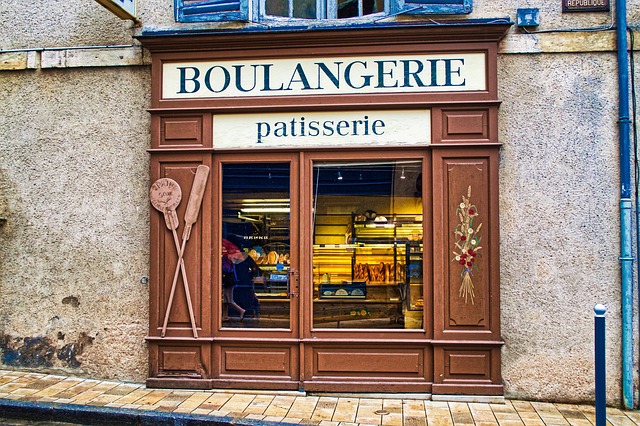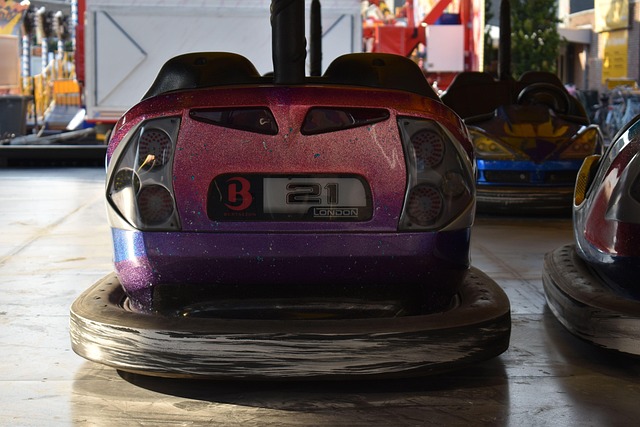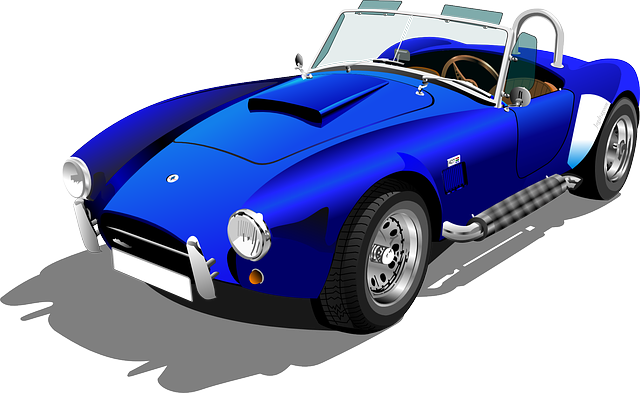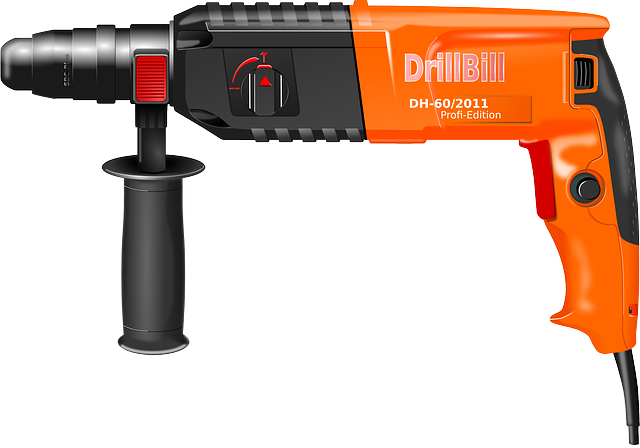Tesla Chrome Trim Repair: DIY or Warranty Service?
Tesla chrome trim repairs are a common concern for owners due to its sensitivity to weather, UV rays…….
In the ever-evolving automotive landscape, the pursuit of sleek design and premium aesthetics has become a defining characteristic of modern vehicles. Among the various elements contributing to this allure is chrome trim—a stylistic touch that enhances the exterior and interior of automobiles, lending them a distinctive and luxurious appearance. This article delves into the realm of Tesla chrome trim repair, exploring its intricacies, global impact, technological advancements, and the challenges it faces in an ever-changing industry. By the end, readers will gain a comprehensive understanding of this specialized field and its role in shaping the future of automotive styling.
Definition: Tesla chrome trim repair is a meticulous process involving the restoration, replacement, or enhancement of decorative chrome elements found on Tesla vehicles. These elements include door handles, window frames, grille bars, and interior accents, contributing to the signature style and elegance associated with Tesla automobiles.
Core Components: The primary components in Tesla chrome trim repair are:
Chrome Parts: These are the decorative elements crafted from stainless steel or zinc alloy, coated with a thin layer of chromium (hence ‘chrome’) for a shiny, metallic finish. Over time, exposure to environmental factors can cause pitting, corrosion, or discoloration, necessitating repair or replacement.
Adhesives and Sealants: Specially formulated adhesives are used to secure the chrome parts in place, while sealants protect against moisture and UV damage. The choice of adhesive depends on the specific part and desired longevity.
Coating Materials: Restoring the original gloss and protection requires high-quality automotive coatings, including clear coats and base coats, applied through professional spraying techniques.
Historical Context: Tesla’s approach to chrome trim repair reflects its commitment to both aesthetic appeal and technological innovation. Since the introduction of the Model S in 2012, Tesla has consistently pushed the boundaries of electric vehicle (EV) design, incorporating sleek, minimalist styling that emphasizes clean lines and premium materials. Chrome trim plays a pivotal role in this design language, adding a touch of sophistication while highlighting Tesla’s dedication to precision engineering.
Significance: Tesla chrome trim repair is more than mere cosmetic enhancement; it contributes significantly to:
Brand Identity: Consistent application of high-quality chrome trim across various Tesla models reinforces the brand’s image as a leader in premium electric vehicles, setting it apart from competitors.
Customer Satisfaction: Restored or improved chrome trim enhances the overall customer experience, ensuring that owners appreciate their vehicles’ aesthetic appeal and precision craftsmanship.
Vehicle Resale Value: Well-maintained and repaired chrome trim can positively impact a Tesla’s resale value, as buyers increasingly seek out vehicles with meticulous interior and exterior conditioning.
Tesla chrome trim repair has garnered worldwide attention, influencing the automotive industry across multiple fronts:
| Region | Impact and Trends |
|---|---|
| North America | The US market leads in Tesla vehicle ownership, driving high demand for chrome trim repairs. Advanced repair techniques and specialized products cater to this region’s stringent quality standards. |
| Europe | With a strong focus on sustainability, European regulations promote the use of lightweight materials, including chrome alternatives. However, restoration remains popular for classic Tesla models. |
| Asia-Pacific | China, as the world’s largest EV market, witnesses rapid adoption of Tesla vehicles. Chrome trim repair services are expanding to meet growing demand, with an emphasis on cost-effective solutions. |
| Rest of World | Emerging markets like India and Brazil see increasing Tesla presence, leading to localized chrome trim repair services adapting to regional climates and driving conditions. |
Market Dynamics: The global Tesla chrome trim repair market is a niche yet dynamic segment within the broader automotive aftermarket industry. Key factors influencing its growth include:
Tesla Vehicle Sales: As Tesla’s sales continue to surge, so does demand for replacement and repair parts, including chrome trim elements.
Consumer Preferences: Growing appreciation for premium aesthetics drives the need for high-quality repairs, fostering a market for specialized services and products.
Competition: The presence of established automotive suppliers and emerging local workshops creates a competitive landscape, pushing innovation and pricing strategies.
Investment Patterns: Investment in Tesla chrome trim repair encompasses:
Research & Development: Companies invest in R&D to develop advanced repair techniques, eco-friendly materials, and innovative tools, ensuring they remain competitive.
Manufacturing: Production of specialized adhesives, coatings, and chrome parts requires substantial capital investments in machinery and skilled labor.
Retail Outlets: Physical shops and online platforms are established to cater to local demand, with varying business models and pricing strategies.
Economic Impact: This industry contributes to the global economy through:
Job Creation: Repair shops, suppliers, and distributors support numerous jobs, from skilled technicians to sales associates.
Revenue Generation: The market generates substantial revenue, with repair costs varying based on part complexity, vehicle model, and regional factors.
Tesla chrome trim repair has witnessed several technological breakthroughs that have transformed the industry:
Advanced Adhesives: Researchers have developed high-strength adhesives capable of bonding chrome parts to various substrates, enhancing durability and resistance to environmental stress.
Laser Technology: Laser welding and cutting techniques offer precise and efficient methods for repairing or replacing damaged chrome components, ensuring minimal distortion.
3D Printing: This technology enables the creation of custom chrome trim parts, allowing for intricate designs and exacting reproductions, particularly for rare or discontinued models.
Digital Color Matching: Advanced color measurement tools and software ensure precise matching of chrome finishes with vehicle colors, enhancing repair quality.
Automotive Standards: Tesla chrome trim repair operates within a framework of global automotive standards and regulations:
ISO/TS 16949: This international standard for quality management systems ensures consistent manufacturing practices and product quality across the industry.
Environmental Regulations: Local laws regarding waste disposal, use of hazardous materials (e.g., chromium), and recycling obligations must be adhered to during repair processes.
Regional Variations: Different regions have distinct regulatory landscapes:
United States: The National Highway Traffic Safety Administration (NHTSA) oversees vehicle safety standards, including those related to exterior trim components.
European Union: EU regulations focus on environmental protection, product liability, and consumer rights, influencing both repair practices and the availability of replacement parts.
China: As the world’s largest EV market, China has stringent safety and quality standards, requiring local manufacturers to meet or exceed international benchmarks.
Despite its advancements, Tesla chrome trim repair faces several challenges:
Costly Repairs: Complex repairs involving custom parts or advanced techniques can be expensive, potentially deterring owners from seeking necessary repairs.
Supply Chain Disruptions: Global supply chain issues can lead to delays in obtaining specialized parts, impacting repair timelines and customer satisfaction.
Lack of Standardization: Variations in manufacturing processes and material quality among different Tesla models can make universal repair solutions challenging.
Proposed Solutions: To overcome these challenges:
Cost Reduction Strategies: Encouraging competition through transparent pricing, promoting DIY repair kits for simple issues, and developing more cost-effective materials can make repairs more accessible.
Supply Chain Optimization: Establishing robust supply chains with multiple local suppliers can ensure timely availability of parts, enhancing service efficiency.
Standardized Repair Protocols: Developing industry standards and protocols for specific Tesla models can facilitate consistent and high-quality repairs worldwide.
A renowned classic car restoration shop in California took on the challenge of restoring a 2013 Tesla Model S with extensive chrome trim damage due to years of exposure to harsh weather conditions. The repair involved:
Part Removal and Assessment: Skilled technicians carefully removed all damaged chrome parts, examining them for reparability.
Adhesive Selection: They chose a specialized adhesive designed to bond stainless steel and aluminum, ensuring structural integrity.
Repair and Refinishing: Using laser welding, they repaired pitting and cracked components, followed by meticulous sanding and clear coating to match the original finish.
Reinstallation: Once restored, the parts were precisely fitted back onto the vehicle, achieving a flawless aesthetic.
This case study exemplifies the level of craftsmanship required in Tesla chrome trim repair, showcasing the transformation from damaged to pristine condition.
A startup specializing in additive manufacturing partnered with Tesla to create custom chrome trim parts for rare Model X models. Using 3D printing technology:
Digital Design: They reverse-engineered the complex chrome components, creating digital designs tailored to each specific vehicle.
Material Selection: A specialized stainless steel powder was used, ensuring strength and corrosion resistance while maintaining the desired aesthetic.
Printing and Finishes: The 3D printers laid down layers of material, building the intricate parts with precision. Post-processing involved polishing and coating to achieve a high-gloss finish.
Integration: The custom-made parts were seamlessly integrated into the Model X’s exterior, showcasing the potential for unique, one-off designs.
This collaboration demonstrates the versatility of 3D printing in Tesla chrome trim repair, offering endless possibilities for customization and restoration.
The future of Tesla chrome trim repair is brimming with opportunities and potential growth areas:
Sustainable Materials: The industry will continue to explore eco-friendly alternatives to traditional chrome plating, driven by environmental concerns and regulatory changes.
Digitalization: Advancements in digital design, manufacturing, and color matching technologies will streamline repair processes, enhance precision, and reduce costs.
Global Expansion: As Tesla’s global footprint expands, so will the demand for localized chrome trim repair services, creating opportunities for international businesses.
Integration with Autonomous Vehicles: With Tesla’s focus on autonomous driving, future repairs may incorporate innovative materials and designs to support advanced sensor systems and camera configurations.
Tesla chrome trim repair is a multifaceted field that combines art and science, aesthetics and engineering. As Tesla continues to shape the future of electric mobility, this specialized sector plays a pivotal role in ensuring vehicles remain not just functional but also visually stunning. Through technological innovation, global collaboration, and adherence to quality standards, Tesla chrome trim repair professionals contribute to the overall ownership experience, fostering a community of enthusiasts who appreciate both performance and style.
Q: How often should I get my Tesla’s chrome trim inspected?
A: Regular inspection is recommended every 6-12 months, depending on driving conditions and environmental factors. This proactive approach helps identify minor issues early, preventing more extensive (and costly) repairs.
Q: Can I perform chrome trim repair myself?
A: While some basic repairs, like cleaning or polishing, can be done at home, complex repairs requiring specialized tools, adhesives, and finishes are best left to professionals. DIY kits for simple tasks are available but may not achieve the same level of quality as professional work.
Q: Are there any eco-friendly alternatives to traditional chrome plating?
A: Indeed, the industry is exploring alternatives like electroplating with less toxic metals, zinc alloy coating, and advanced electrostatic painting techniques. These methods reduce environmental impact while maintaining aesthetic appeal.
Q: How do I know if my Tesla’s chrome trim needs repair?
A: Signs of damage include pitting, discoloration, cracking, or loose parts. If you notice any of these, inspect further to determine the extent of the damage. Professional assessment is always recommended for accurate diagnosis and repair recommendations.
Q: Can 3D printing replace traditional chrome trim manufacturing entirely?
A: While 3D printing offers remarkable versatility and customization, it may not entirely replace traditional methods for complex parts due to cost, material properties, and structural integrity considerations. However, it’s ideal for custom designs and rare vehicle models.

Tesla chrome trim repairs are a common concern for owners due to its sensitivity to weather, UV rays…….

Tesla chrome trim repair requires prompt attention to prevent severe damage. Options include repairi…….

Tesla chrome trim repair is a specialized service addressing dents, scratches, and curbing damage on…….

Tesla owners often face chrome trim damage from weather, chemicals, or accidents. A DIY assessment i…….

Tesla chrome trim repair is a meticulous process to preserve the modern aesthetic of these vehicles,…….

Tesla chrome trim damage, from scratches to breaks, often stems from accidents, weather, or improper…….

Tesla chrome trim repair addresses exterior aesthetic issues caused by weather, debris, or wear. Com…….